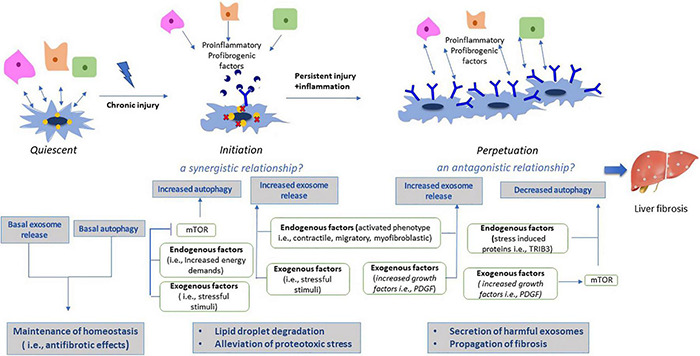FIGURE 3.

Effects of autophagy and exosomes during HSC activation. Under normal conditions, qHSCs are characterized by basal autophagic levels and exosome release, indicative of their phenotypic characteristics as a resting, vitamin-A storing cell. Both autophagy and exosomal cargo contribute to maintenance of homeostasis by their antifibrotic effects. On the other hand, activation process is divided in two phases; initiation and perpetuation. During initiation phase, liver injury results in increased stress levels, thereby inducing autophagy by mTOR signaling pathway. However, aggregation of harmful substances derived from injured liver cells, exceeds autophagy capacity to degrade them, thus exosome secretion is synergistically upregulated as an alternative pathway to alleviate proteotoxic stress. In addition, activation of HSCs requires high energy levels, thus energy deprivation results in activation of lipophagy and lipid droplet degradation. During perpetuation phase, aHSCs have now been adapted to their new phenotype and micronenvironment, thus they no longer confront energy deprivation, resulting in decreased autophagic levels. Downregulation of autophagy has been potentially associated with induction of harmful secretion of exosomes from aHSCs, thus resulting in propagation of liver fibrosis.
